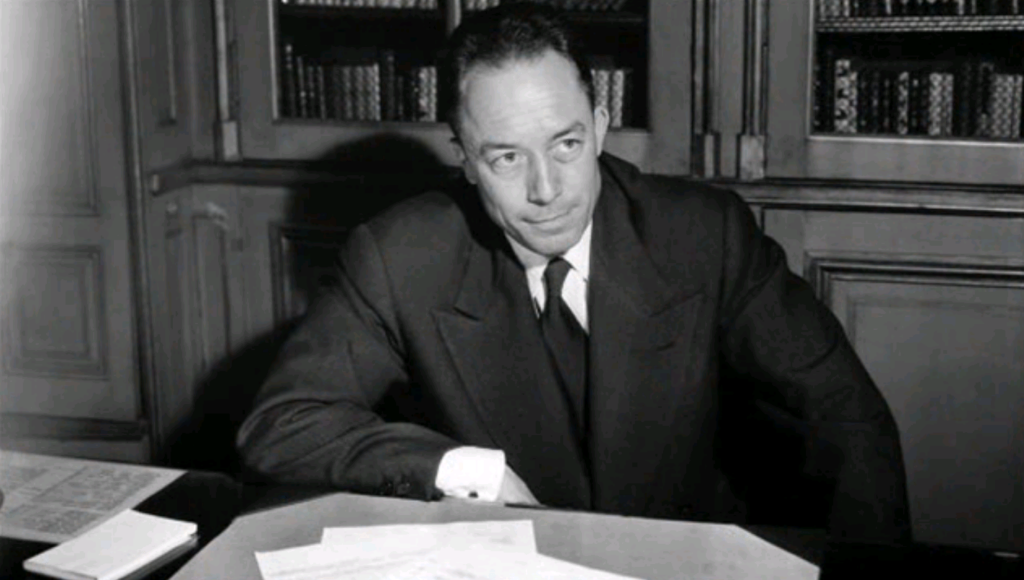The Political Future, Albert Camus
The Political Future
Without pretending to be a distinguished economist, I would like to consider in purely commonsensical terms what political, economic, and social future one might like to see for Kabylia. I have said enough about the misery of this region, but one cannot simply describe such distress without saying something about what response is called for.
I would also like to say something about method. In the face of such an urgent situation, we must act quickly, and it would be foolish to contemplate a utopian scheme or advocate impossible solutions. That is why each of the suggestions below starts not with risky principles but with experiments that have already been tried or are currently under way in the region. And of course nothing in this story is invented; everything is taken from reality. As a talented speaker recently put it, in politics there are no copyrights. My goal is to help a friendly people, and the only purpose of these proposals is to serve that goal.
One must start from the principle that if anyone can improve the lot of the Kabyles, change has to begin with the Kabyles themselves. Three-quarters of the population lives under the mixed regime, village-chieftain system.1 Many other writers have criticized this political form, which bears only a distant resemblance to democracy, and I will not repeat their criticisms here. The abuses due to this system have been abundantly documented. But even within the framework of the mixed commune, the Kabyles now have an opportunity to demonstrate their administrative skills.
With the law of April 27, 1937, a generous legislature opened the possibility of transforming certain Algerian douars into communes run by the native population under the supervision of a French administrator. Several experiments of this sort have been carried out in Arab and Kabyle regions. If these attempts are deemed successful, then there is no reason to delay extending the douar-commune system. As it happens, an interesting experiment is under way right now in Kabylia, and I wanted to see it for myself. Since January 1938, the douar of Oumalous, a few kilometers from Fort-National, has been operating as a douar-commune under the leadership of M. Hadjeres.
Thanks to his kindness and intelligent competence, I was able to observe the operation of this douar in person and document its achievements. The Oumalous douar includes 18 villages and a population of 1,200. A town hall was built in the geographical center, along with several additional buildings. This town hall is like any other town hall, but for residents of the douar it has the advantage of allowing them to complete administrative formalities without extensive travel. In May 1938, the town hall issued no fewer than 517 administrative documents to citizens of the commune, and in the same year it facilitated the emigration of 515 Kabyles.
With a minimal budget of 200,000 francs, this miniature municipality, staffed by Kabyle officials elected by Kabyle voters, has presided for the past year and a half over an indigenous community in which complaints are rare. For the first time, Kabyles are dealing with officials whose work they can monitor and whom they can approach to talk things over rather than merely obey in silence.
The Kabyles quite rightly attach considerable value to these changes. One therefore cannot be too careful in criticizing recent experiments. M. Hadjeres has nevertheless proposed certain improvements, which strike me as reasonable. To date, voters have been obliged to vote for slates of candidates, with the winning slate then electing its own president. The douar retains its traditional caïd, however, and remains under the supervision of a colonial administrator. The respective functions of these three officials—president of the commune, caïd, and administrator—are not clearly defined, and it would be useful to clarify and delineate them.
Furthermore, the experiments with the douar-commune system have provoked a number of protests, whose motives I will not discuss, and elicited a number of criticisms that call for further examination. A recent series of articles argued that the douar was an artificial administrative unit and that the creation of douar-communes risked bringing together villages and factions with opposing interests. In most cases this is simply not true, although it does sometimes happen. In any case, the same series of articles proposed establishing native rule at the level of the village rather than the douar, and this is a very bad idea. For one thing, most villages have little if any resources. There are villages, for instance, whose only common property is a single ash or fig tree. For another, there are far too many Kabyle villages to allow an adequate level of administrative supervision.
To be sure, it would be a good idea to group villages that share a common geographical and cultural situation. Perpetuating old divisions in a mixed communal framework would result in administrative complications that are best avoided.
It therefore seems preferable to amend the existing legislation without changing the basic administrative framework. On this point, I can do no better than to summarize the plan that M. Hadjeres explained to me with remarkable lucidity. Essentially, his plan comes down to extending democracy at the douar-commune level and introducing a kind of proportional representation. If the goal is to avoid conflicts of interest, M. Hadjeres is of the opinion that the best way to do this is to allow all interests to be expressed. He therefore proposes that voters no longer be asked to vote for a slate of candidates. Instead, each village should elect its own representatives. These representatives would then come together to form a municipal council, which would elect its own president. In this way, competition among villages within a douar would be eliminated.
In addition, village elections would be based on proportional representation, with each village entitled to one representative for every 800 citizens. In this way, intra-village rivalries would also be eliminated. As a result, the djemaa of Oumalous would be reduced from 20 members to 16. Finally, M. Hadjeres envisions the transformation into communes of all the douars of the mixed commune of Fort-National, along with the creation of a single budget combining all available resources, which would then be shared among douars in proportion to their needs and population.
This would establish a small federative republic in the heart of Kabyle territory, a republic inspired by deeply democratic principles. As I listened to the president of Oumalous, I appreciated his remarkable lucidity and common sense, which might well serve as an example for many of our democratic officials. In any case, I have set forth his proposal as he described it. I hope that the administration will know how to put it to good use.
If the Oumalous experiment is deemed to have been a success, there is no reason not to extend it elsewhere. Many douars are waiting to be transformed into communes. Around Michelet, for example, there are some that seem even more likely to succeed than Oumalous. They have markets that handle a substantial volume of trade. If the administration wants this experiment to succeed, then these douars, such as Menguellet and Ouacif, should become communes. Frequently, however, the mixed commune opposes this change for douars with markets on the grounds that these markets provide revenue to the commune (as much as 150,000 francs per year in some cases). But these douars are virtually the only viable ones. If, moreover, one believes that the douar-commune should within a short period of time replace the mixed commune altogether, then one will agree that it is the latter that should be sacrificed.
Furthermore, the authorities should not hesitate to transform other douars, such as Ouadhias, into full-fledged communes. There are already more than 100 French voters in the center of Ouadhias. Its market brings in 70,000 francs a year, and it yields 100,000 francs in taxes. This would be a good place to experiment with allowing French citizens of Kabyle descent to gain experience in public affairs.
In any case, such a generous policy would clear the way for the administrative emancipation of Kabylia. To achieve that goal, it is enough today to really want it. It can be pursued in parallel with material assistance to this unfortunate region. We have made enough mistakes along the way to be able to benefit from the lessons that failure always has to teach. For instance, I know of few arguments more specious than that of personal status2 when it comes to extending political rights to natives, but when applied to Kabylia, the argument becomes ridiculous, because it was we French who imposed a personal status on the Kabyles by Arabizing their country with the caïd system and introducing the Arabic language. It ill behooves us today to reproach the Kabyles for embracing the status we imposed on them.
That the Kabyle people are ready for greater independence and self-rule was obvious to me one morning when, after returning from Oumalous, I fell into conversation with M. Hadjeres. We had gone to a gap in the mountains through which one could see the vast extent of a douar that stretched all the way to the horizon. My companion named the various villages for me and explained what life was like in each one. He described how the village imposed solidarity on each of its members, forcing all residents to attend every funeral in order to make sure that the poor man’s burial was no less impressive than the rich man’s. He also told me that banishment from the community was the worst possible punishment, which no one could bear.
As we looked down

